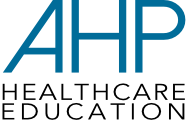

Understanding Health Insurance: A Guide to Billing and Reimbursement, 2022 Edition
$184.99
LEARNING DESIGN METHODOLOGY WITH CLEAR OBJECTIVES GUIDES READER UNDERSTANDING. This edition’s learning design methodology clearly maps chapter content to both major topics and well-defined learning objectives to keep students focused and progressing.
In stock
ANNUAL UPDATES ADDRESS THE LATEST DEVELOPMENTS IN HEALTH INSURANCE AND MEDICAL BILLING TODAY. In addition to updating content throughout, this edition has consolidated and streamlined information for a clearer presentation. Chapter 2, Introduction to Health Insurance, now combines information from previous brief Chapters 2 and 3. Information in former Chapter 4 is now separated into Chapter 3, Introduction to Revenue Management, and Chapter 4, Revenue Management of the Insurance Claim Cycle, Maintaining Insurance Claim Files, and Credit and Collections.
UPDATED INSTRUCTIONS GUIDE STUDENTS THROUGH ACCURATELY COMPLETING TODAY’S INSURANCE CLAIMS. The author has carefully updated all instructions for completing insurance claims within Chapters 11-17. Revisions reflect the latest requirements and prepare students to seamlessly transition their skills from the academic to professional environment.
CONTENT ON REVENUE MANAGEMENT IS DIVIDED INTO TWO CHAPTERS 3 AND 4 FOR CLEARER PRESENTATION. Chapter 3 introduces new material on accounts payable; copayment; discharged not final billed (DNFB), discharged not final coded (DNFC); facility, institutional and professional billing; and single-path coding. Content also addresses emancipated minors, suspended claims, third-party payer review, independent external reviewer (or Medicare-qualified independent contractor), fragmentation and skip tracing. The review has three new assignments. Chapter 4 covers the claim cycle, files, credit and collection.
EXPANDED COVERAGE OF THE NATIONAL CORRECT CODING INITITATIVE (NCCI) PROGRAM APPEARS IN CHAPTER 5. Additional new content about the NCCI program provides clarification about its use. In addition, the Chapter 5 review contains two new assignments addressing HIPAA fraud and abuse and privacy and security rules.
UPDATES TO ICD-10-CM CONTENT REFLECT THE LATEST CHANGES AND DEVELOPMENTS. This edition highlights all updated ICD-10-CM guidelines and codes and applicable general coding guidelines within outpatient coding guidelines using shaded boxes. This shading bring special attention to the most recent changes.
NEW COVERAGE HIGHLIGHTS THE LATEST CPT® CHANGES. The author has incorporated the most recent CPT coding guidelines and codes throughout this edition. Coding Step 7 within the Review Appendix B in the CPT coding manual was added to guide readers. In addition, new content clarifies how to enter CPT codes on the CMS-1500 claim, based on highest to lowest reimbursement and the global period.
UPDATES TO CONTENT IN CHAPTERS 6-17 INTEGRATE NEW AND REVISED ICD-10-CM, CPT® AND HCPCS LEVEL II CODES. All explanations, exercises and activities within these chapters reflect the latest changes and most up-to-date rules and regulations and their impact on today’s coding systems.
CHAPTER 9 PROVIDES NEW CONTENT RELATED TO NEVER EVENTS AND ASC/HOSPITAL VALUE-BASED PURCHASING. New material highlights Never Events, ambulatory surgery center value-based purchasing and imagery that summarizes VBP programs. New explanations clarify hospital value-based purchasing. In addition, the chapter review contains three new assignments: Data Analytics for Medicare Part B Reimbursement, Interpreting Medicare Status Indicators and Procedure Discounting Data for Ambulatory Payment Classifications, and Interpreting Medicare-Severity Diagnosis-Related Groups Data.

